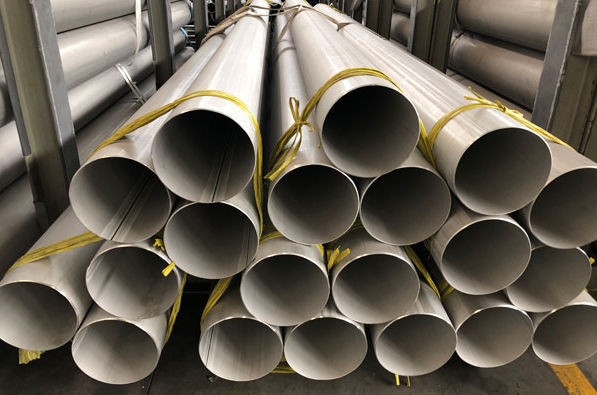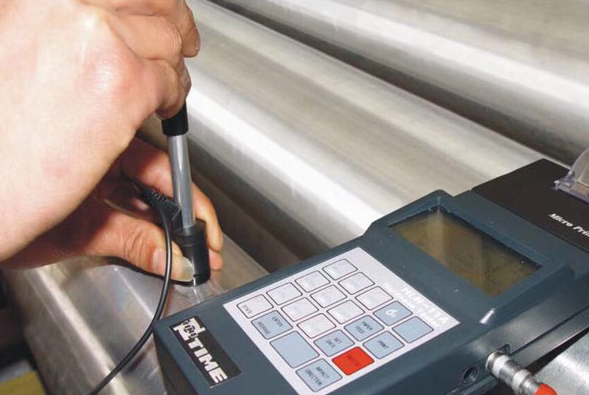
Classification of Stainless Steel
Stainless steel pipe is a hollow long round steel, which is widely used in petroleum, chemical, medical, food, light industry, machinery and instrumentation and other industrial transportation pipelines and mechanical structural parts. In addition, when the bending and torsion strength are the same, the weight is lighter, so it is also widely used in the manufacture of mechanical parts and engineering structures, as well as furniture, kitchen utensils, etc.

Simple classification of stainless steel:
Stainless steel can be roughly divided into three categories: 200 series, 300 series and 400 series, among which 300 series is the most commonly used, 200 series and 400 series are substitutes for 300 series to a certain extent, and 400 series is not called stainless steel strictly speaking. , Called stainless iron, because it does not contain nickel, it can be attracted by a magnet. The 200 series and 300 series have nickel, so they are not magnetic and cannot be absorbed by iron.
304 is the most common variety in the 300 series, so generally the price trend of the entire stainless steel can be judged from the price change of 304. The 200 series contains less nickel, the 400 series does not contain nickel, and the 300 series contains the most nickel. Therefore, the 300 series is most affected by the nickel price.
The 300 series can be divided into 304, 304L, 316, 316L, 321, 309S, 310S, etc. The distinction is based on the content of various metal elements, and the characteristics of stainless steel with different content are different. The difference between 304 and 304L is The carbon (C) content is different. The one with L means low carbon content, which is also called low carbon. The difference between 316 and 316L is the same.
Shape classification of stainless steel:
Stainless steel can be divided into five categories: coils, plates, profiles, steel pipes and parts, the most important being coils and plates. Profiles are materials of various shapes made of plates, including angle steel, flat steel, I-beam, and channel steel. The steel pipe mainly refers to the seamless steel pipe. The opposite of the seamless steel pipe is the welded pipe. The difference lies in whether it is formed at one time. Parts mainly refer to elbows and flanges and other small things.
The coil and the plate are actually the same, and the form of delivery is different. The coil is rolled one by one, and the plate is one by one. If the factory is a plate, it is also called an original plate. It is generally a thick plate because it is very thick. If it is, it cannot be rolled, generally it cannot be rolled if it is more than 16 mm.
The price of coil and plate is also different. If it is a purchased coil, it is calculated according to the actual weight. Therefore, the price is high. The plate is calculated according to theory, and the price is low. The reason is that there is a difference, such as the actual possibility of 10mm thickness. It is 9.6mm, there will be a price difference in between.

The characteristics and uses of the main types of stainless steel:
304 stainless steel: As a widely used steel, it has good corrosion resistance, heat resistance, low temperature strength and mechanical properties, good hot workability such as stamping, bending, etc., no heat treatment hardening phenomenon, non-magnetic, operating temperature -193°C ~800°C.
Uses: Tableware, kitchen utensils, water heaters, boilers, auto parts, medical equipment, food machinery, wine storage, pressure vessels (chemical machinery, chemical equipment).
304L stainless steel: As a low-carbon 304 steel, in general, its corrosion resistance is similar to that of 304, but after welding and stress relief, it has good intergranular corrosion resistance, and it can maintain good intergranular corrosion without heat treatment. The corrosion resistance is generally used at 400°C.
Uses: Petrochemical industry, building materials.
321 stainless steel: 321 Ti element is added to 304 steel to prevent intergranular corrosion. It is suitable for below positive 430°C~900°C, non-magnetic;
Uses: Automobile exhaust, heat exchangers, containers and other products that do not undergo heat treatment after welding are not suitable for food processing equipment due to the addition of Ti element.
316 stainless steel: 316 has low carbon and added MO element, so its corrosion resistance, atmospheric corrosion resistance and high temperature strength performance are particularly good. It can be used under harsh conditions and is suitable for use below 900°C. It is non-magnetic.
Uses: Equipment used in seawater, chemical, dye, paper, acetic acid, fertilizer and other production equipment, food industry and coastal facilities, products with special requirements for resisting intercrystalline corrosion.
309S/310S stainless steel: The two materials of 309S/310S have relatively high content of nickel and chromium. At the same time, the content of Si is increased to make it have high temperature resistance and corrosion resistance. Among them, 309S can withstand repeated heating below 980°C, and the use temperature of 310S reaches 1200°C. , Continuous use temperature can be 1150°C, non-magnetic.
Uses: Suitable for key parts such as high temperature electric furnace equipment, drying equipment, furnace materials, aviation, petrochemical, electric power, etc.
The 200 series is similar to 304, which is cheap and economical.
Uses: Food processing utensils, kitchen equipment, food processing equipment, filters, milk tanks, durable consumer goods, washing machine accessories, water heaters, steel furniture, building decoration, decoration. In terms of fatigue resistance, the hardness of 201 is greater, but the toughness is not as good as that of 304, but the fatigue strength of 304 is better.
Features of stainless steel:
A. The stainless steel material has stable physical and chemical properties, no pollution to the water quality, and ensures the water quality is clean and hygienic.
B. Beautiful appearance, relatively light weight, and small footprint.
C. The service life is long, one investment can be used almost for a lifetime, and the installation is simple.
D. A wide range of applicable fields. It is a high-quality choice for high-end swimming pools, water parks, and hot spring spas.
E. Strong corrosion resistance, good sealing, no leakage, protect the water source from secondary pollution, and have great impact resistance.
F. Easy to clean, easy to install, and long service life.


